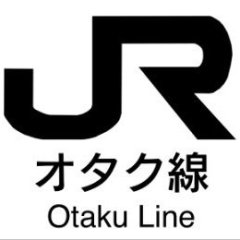Search the Community
Showing results for tags '485 series'.
-
One of the configurations for the Hitachi/Hibari in my Kato 485-300 Series instruction manual calls for the earlier bonnet-type クハ car at one end, which I do have. What exactly led to this asymmetrical choice of cab cars?
-
I was interested in trains when I lived in Japan, but I wasn't clued in and the internet was only starting to become the clearinghouse of information that it is now. Despite living reasonably close to depots that would have had open days, I never went to one, and at this point if I get back to Japan ever, I'll be a bit surprised. Well the guys at JR East Akita Depot have really come through with a little Christmas gift, an "online tour" of their facility via Zoom that they have now posted on YouTube. Looks like they did this 3 times on December 19. Most of it appears to be live, and they do a great job. There is some stop motion footage of a thorough DE10 inspection/overhaul, and quite a wild time testing a DE10 engine on a dynamometer. Folks who blow up their $100,000 diesel pickups on a portable dyno at the county fair have nothing on these guys. Seriously, where do I apply? Later they checkout a few more interesting pieces preserved 583 series driving car, KUHANE 583-17 485-700 series joyful train Kirakira Uetsu Akita Cruise joyful train DMU, formerly the Resort Shirakami Buna (Japanese Beech) formation, and prior to that, rank and file KIHA48s DE10 1651, built by Kawasaki in 1973
-

JR East Uetsu Main Line - Niigata to Sakata
miyakoji posted a topic in Japan Rail: Pictures & Videos
It's rare to get such a good view of this line. In this case it's possible due to the modified 485 series NO.DO.KA joyful train used for this "Sakata Kandara Festival" service. The train is classified as a rapid, so there's no express surcharge, although all seats are reserved. The 3-car formation has 96 seats. I've been trying to fill in some background on this; the cities of Sakata and Tsuruoka, both in Yamagata Prefecture, have this festival (28th and 27th times, respectively) for kandara, which I believe is cod caught in cold water. A soup is made with it, which does not appear to be cold :). This service conveys people from Niigata, which is the regional big city. One of my goals for any meaningfully long trip to Japan is to travel as much of the Sea of Japan coast as possible. I've only covered Tsuruga to Hagi so far, leaving quite a bit to do . video by tejy Train: http://www.youtube.com/watch?v=T6LK0a-tL54 And here at Shibata Station, we can see tejy Train making the video. :) :). Video by Igarashi Satoshi. JR East Niigata Branch publication on service (pdf format): http://www.jrniigata.co.jp/20141128kandara.pdf page for festival: http://www.sakata-kankou.com/event/102 Uetsu Main LIne: http://en.wikipedia.org/wiki/Uetsu_Main_Line Sakata Station: http://en.wikipedia.org/wiki/Sakata_Station_%28Yamagata%29 lastly, cod ('tara' in Japanese): http://en.wikipedia.org/wiki/Gadidae- 2 replies
-
- 1
-

-
- jreast
- 485 series
- (and 10 more)
-

AC traction: do 50Hz and 60Hz need different equipment?
miyakoji posted a topic in Japan Rail: News & General Discussion
I was having a look at the link below (2 more 2-car 521 series sets delivered, these from Kinki Sharyo), and I got to wondering if these were dual current, or actually triple current. The venerable 485 series, for example, apparently runs on 1500VDC and 20kVAC at both 50Hz and 60Hz, while some other JNR-era equipment seems to be listed under one or the other. I assume there has to be isolation in the catenary between two different frequencies, but must the train be switched when crossing from one zone to the other? http://railf.jp/news/2015/02/07/191000.html http://en.wikipedia.org/wiki/485_series- 3 replies
-
- 485 series
- 521 series
-
(and 2 more)
Tagged with:

